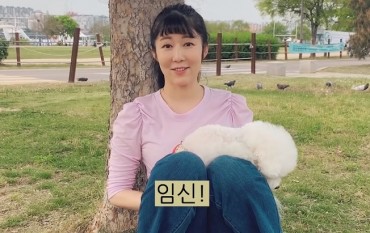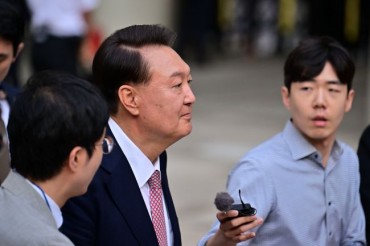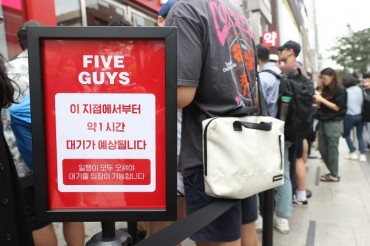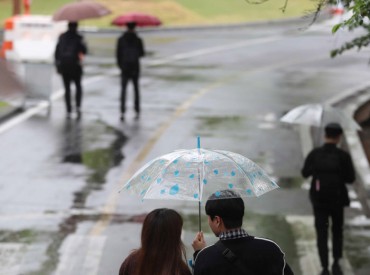
People stand in line to get COVID-19 tests at a make-shift screening station at Suseo Station in southern Seoul on Sept. 22, 2021, the last day of the Chuseok holiday. (Yonhap)
SEOUL, Sept. 25 (Korea Bizwire) — South Korea’s daily coronavirus cases on Saturday exceeded 3,000 for the first time since the start of the pandemic as people returned home from the Chuseok holiday.
The country reported an all-time high number of daily cases for the second consecutive day by adding 3,273, including 3,245 local infections, raising the total caseload to 298,402, according to the Korea Disease Control and Prevention Agency (KDCA).
Saturday’s daily caseload jumped 842 from the previous day’s record high of 2,431, marking the highest since the country reported its first COVID-19 case in January last year.
The surge in daily cases came as millions of South Koreans returned home after Chuseok, the Korean autumn harvest celebration, which ran from Monday to Wednesday.
Daily cases have stayed over 1,000 for the last 81 days amid the fast spread of the more transmissible delta variant across the country.
Later in the day, health authorities said 2,492 new cases had been confirmed as of 9 p.m. Saturday, 434 fewer than at the same time the previous day.
Daily infections are expected to continue to be around 2,700 on Sunday despite fewer tests over the weekend.
Health authorities warned of a further hike in cases, as around 1 million citizens were awaiting their coronavirus test results Friday following the mass migration during the Chuseok holiday.
KDCA Commissioner Jeong Eun-kyeong urged citizens to cancel private gatherings for the next two weeks, saying the daily caseload could jump even more during the period.
Jeong warned a further spike in new cases could lead to more patients in serious condition, putting a strain on the country’s medical system.
The government had considered gradually shifting to a “With Corona” policy in late October, but that plan is also expected to be reevaluated if the current pace of the virus spread continues.
“To return to our normal life, the most important thing is keeping the virus situation at a stable level until late October when 70 percent of the country’s population is expected to be fully vaccinated,” Jeong said during a regular press briefing.
The country added seven more deaths from COVID-19, raising the death toll to 2,441. The fatality rate was 0.82 percent.

A medical worker splits up doses of a coronavirus vaccine in a vial at a COVID-19 vaccination center in Seoul on Sept. 23, 2021. (Yonhap)
The Seoul metropolitan area, home to half of the nation’s 52 million population, accounted for 77 percent of the total infections.
Seoul reported 1,222 cases, marking the first time for the figure to surpass the 1,000 mark. The surrounding Gyeonggi Province reported 1,102 cases, and the western port city of Incheon added 201 cases.
The greater Seoul area, the hotbed of South Korea’s latest wave of the pandemic, has been under Level 4 distancing measures, the highest in the country’s four-tier system, since July with most other areas being under Level 3.
The bans on private gatherings were eased during the latest holiday, allowing up to eight people to gather on the condition that four of them are fully vaccinated.
But the authorities tightened the restrictions, limiting the number of private gatherings to a maximum of six starting Friday.
Asked if social distancing rules could be further tightened in the wake of the spike in new cases, Jeong said they will have to see the virus trend until at least next week.
As of Friday, a total of 37.8 million people, or 74 percent of the country’s population, have received their first shots of COVID-19 vaccines, and 23 million people, or 45 percent, have been fully vaccinated, the KDCA said.
Of 21,741 patients aged 18 or older confirmed between Sept. 5-18, 85.5 percent had either not received any vaccine shots or been partially inoculated, officials said.
Under a goal to achieve herd immunity by November, the government plans to begin administering COVID-19 vaccines to pregnant women and people aged between 12 and 17 next month.
Earlier in the day, over 1 million doses of coronavirus vaccines produced by Moderna Inc. arrived in South Korea following a supply disruption at the U.S. pharmaceutical company.
Imported cases came to 28, including four from Uzbekistan, and three each from Myanmar and Mongolia.
The number of patients with serious symptoms across the country reached 339, up 30 from the previous day.
The total number of people released from quarantine after making full recoveries was 266,414, up 1,922 from a day earlier.
Authorities, meanwhile, corrected Friday’s daily caseload from 2,434 to 2,431, citing three erroneous reporting and test results.
(Yonhap)






